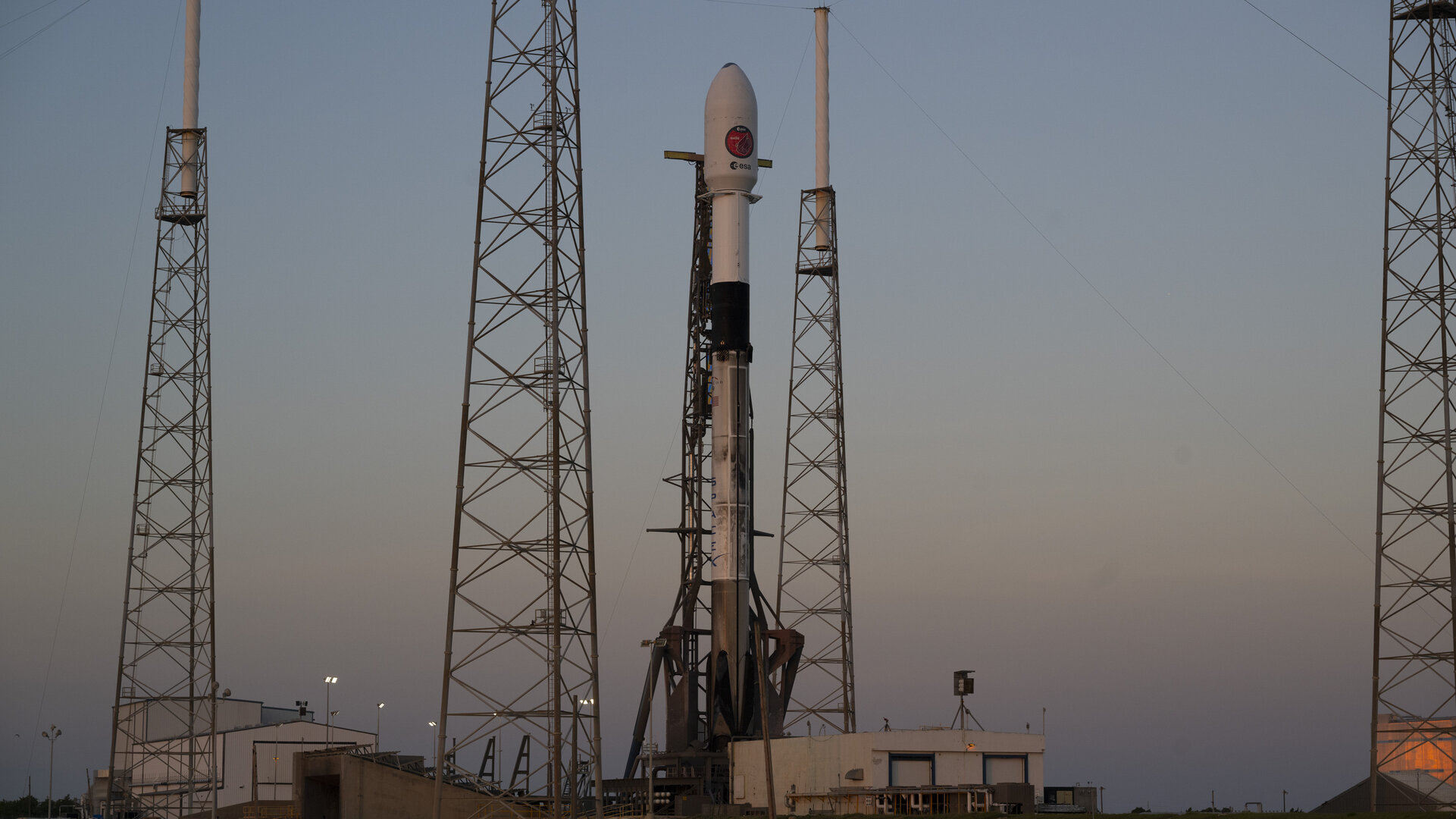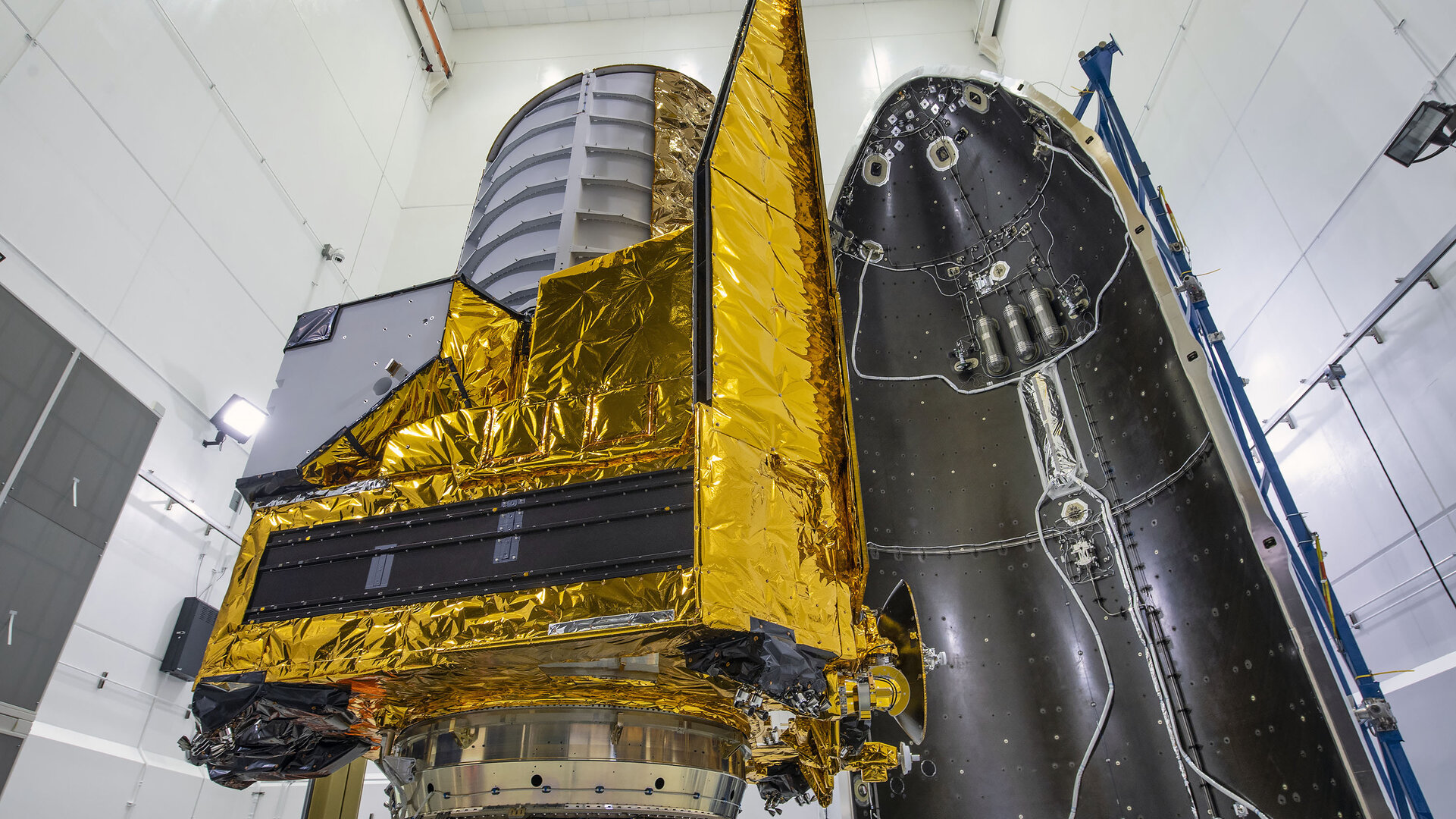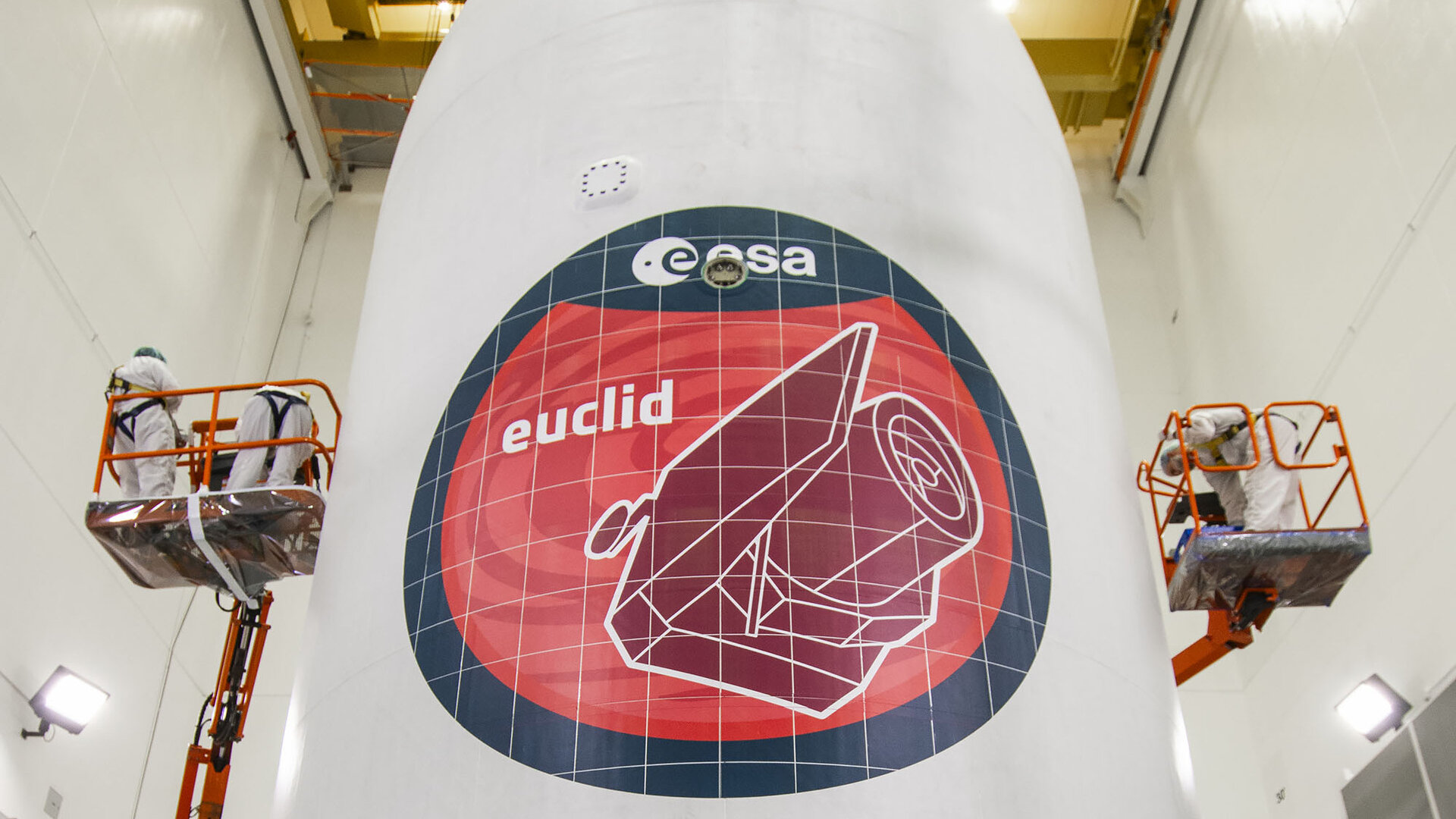Euclid: preparing for launch
ESA’s mission Euclid is getting ready for lift-off on a SpaceX Falcon 9 from Cape Canaveral in Florida, USA, with a target launch date of 1 July 2023.
Between 23 and 28 June, Euclid was mounted atop the Falcon 9 adaptor, encapsulated in the rocket fairing, and transported to the Cape Canaveral Space Launch Complex 40 (SLC-40). These photos capture the key milestones in this process.
Euclid's destination is the Sun-Earth Lagrange point L2, an equilibrium point of the Sun-Earth system. Located in the opposite direction of the Sun at 1.5 million km from Earth (about four times the Earth-Moon distance), this is an ideal place for space telescopes aimed at astronomical observations.
After a journey of about a month, Euclid will reach the insertion point of its wide orbit around L2. This will be followed by an intense phase of two months of testing and calibration of the scientific instrumentation, and of preparing for the routine observations. After which, Euclid will start its task of surveying one third of the sky with unprecedented accuracy and sensitivity. This will take six years of observations.
The Euclid’s mission is to uncover two mysterious components of our Universe: dark matter and dark energy. Understanding the role of these enigmatic entitities will help us answer the fundamental question: what is the Universe made of?
Equipped with an advanced telescope and innovative optical and near-infrared scientific instrumentation, Euclid will observe billions of galaxies out to 10 billion light-years to create the largest, most accurate 3D map of the Universe.
This extensive and detailed chart of the extragalactic sky will reveal how matter is distributed across immense distances and how the expansion of the Universe has evolved over time, enabling scientists to learn more about the role of gravity and pin down the properties of dark energy and dark matter to reveal their elusive nature.
Euclid is a European mission, built and operated by ESA, with contributions from NASA. The Euclid Consortium is responsible for providing the scientific instruments and scientific data analysis. ESA selected Thales Alenia Space as prime contractor for the construction of the satellite and its service module, with Airbus Defence and Space chosen to develop the payload module, including the telescope. NASA provided the detectors of the Near-Infrared Spectrometer and Photometer, NISP. Euclid is a medium-class mission in ESA’s Cosmic Vision Programme.











